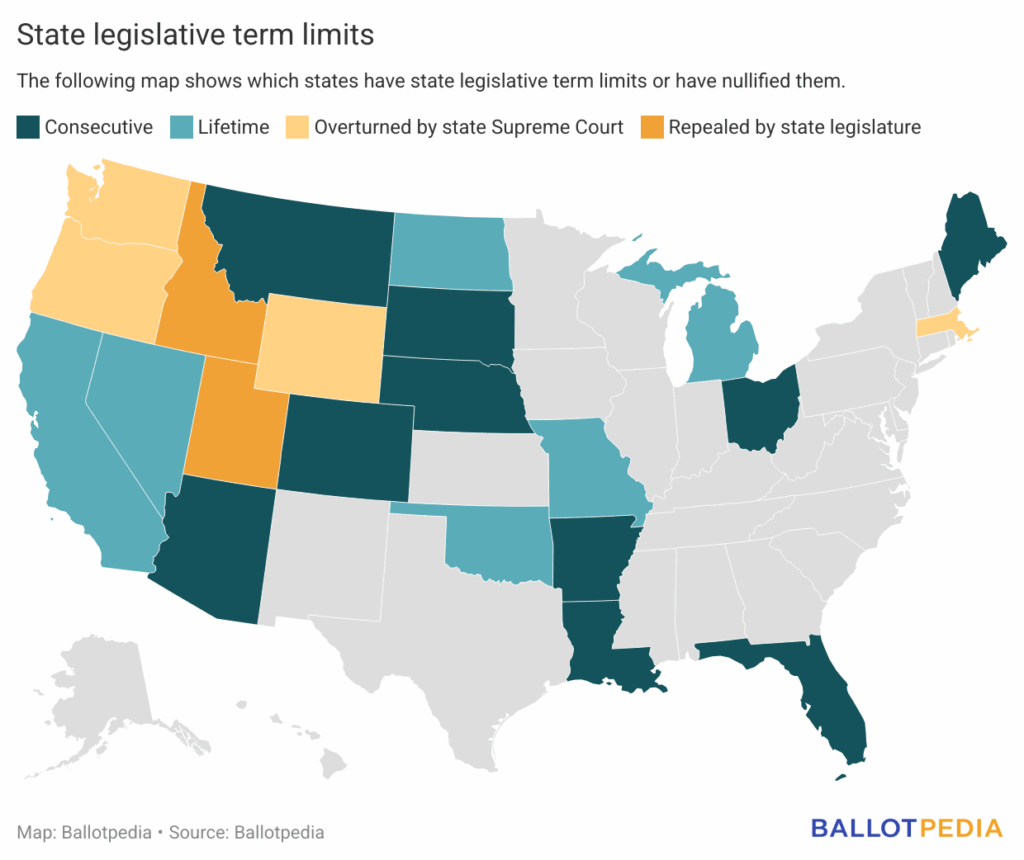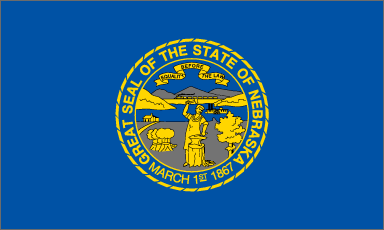Nebraska senators voted to send a constitutional amendment to the Nov. 3, 2026, ballot that would lengthen the state legislative term limit passed by voters in 2000. Initiative Measure 415 provided that state legislators are not eligible for office in the legislature for four years after serving two consecutive terms (eight years). The 2026 amendment would increase this to three consecutive terms (12 years).
Initiative Measure 415 was placed on the ballot by a successful citizen-initiative campaign. It was passed by a margin of 55.8% to 44.2%. It took effect in 2006.
A similar amendment to increase the consecutive terms from two to three was defeated by Nebraska voters in 2012. Amendment 3 was placed on the ballot by the state legislature and was defeated with 64.7% of voters opposing it.
Since the term limit was implemented in 2006, six Nebraska state legislators have returned to serve after the four-year term limit requirement, according to the Nebraska Examiner.
Nebraska is one of 16 states that currently have state legislative term limits. California, Colorado, and Oklahoma were the first to approve measures in 1990.
Legislative term limits can be either lifetime or consecutive. In the 10 states where the limits are consecutive, once a state legislator has served the maximum number of terms in office, he or she, if eligible, can run for office for the state's other legislative chamber, or leave the legislature. These states are Arizona, Arkansas, Colorado, Florida, Louisiana, Maine, Montana, Nebraska, Ohio, and South Dakota. After a period of time no longer in office in a particular legislative chamber, however, the legislator is allowed to run again for office in that legislative chamber. The period of time that a legislator must be out of office before being able to run again is usually two years.
In six of the 16 states with limits on state legislators, the limit is a lifetime limit. These states are California, Michigan, Missouri, Nevada, North Dakota, and Oklahoma. In these states, once a legislator has served the maximum allowable number of terms in a particular legislative chamber, they may never again run for or hold office in that particular chamber.
Six states (Idaho, Massachusetts, Oregon, Utah, Washington, and Wyoming) had state legislative term limits that were ultimately nullified by the state legislature or a state supreme court.

The last state to adopt legislative term limits was North Dakota in 2022 with the approval of a citizen-initiated constitutional amendment that limited the legislature to serving eight years in each chamber and limited the governor to serving two four-year terms. The amendment also provided that the term limits could only be changed by citizen initiative and not by the state legislature. It was approved with 63.4% of the vote.
In 2026, North Dakota voters will be deciding on changes to the 2022 initiative, including authorizing legislators to serve four complete four-year terms regardless of chamber. A term that is less than four years would not count toward the term limit. It would also repeal the prohibition against the state legislature changing the term limits.
A 60% supermajority vote is required during one legislative session to place a constitutional amendment on the ballot. That amounts to a minimum of 30 votes in the unicameral legislature, assuming no vacancies. A simple majority vote is required for voter approval. However, the number of affirmative votes cast for the measure must be greater than 35% of the total votes cast in the election.
The 2026 amendment was approved by the legislature on May 28 by a vote of 39-10.
State Sen. Rob Dover (R-19), one of the sponsors of the amendment, said term limits impact the unicameral chamber differently than other states with two legislative chambers. Dover said, “In all other states in the U.S., there are two chambers, so that when a representative is termed out, they go to the other chamber and serve, taking their eight years of experience with them to continue to serve their state.”
The amendment received support from Common Cause Nebraska, Lincoln Chamber of Commerce, Nebraska Taxpayers for Freedom, and League of Nebraska Municipalities during the legislative process.
This is the first amendment to be certified in the state for elections in 2026.
In Nebraska, a total of 112 ballot measures appeared on statewide ballots between 1985 and 2024. Voters approved 69 ballot measures, and 43 ballot measures were defeated.
Additional reading:


